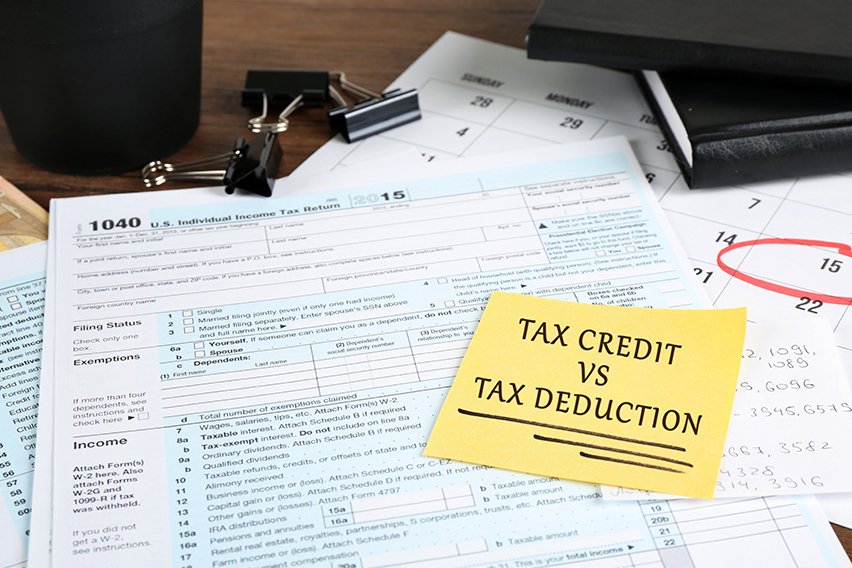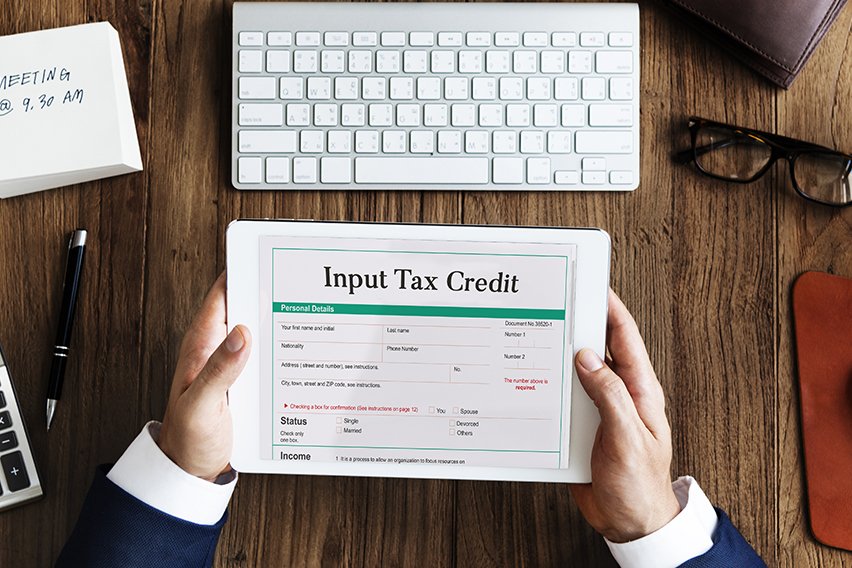Dividend Tax Credit: A Detailed Guide for Canada

When a company shareholder or investor receives taxable dividends in cash form quarterly or annually (rather than in the form of additional stock), they must pay taxes on their earnings at the end of the tax year along with their employment income.
The dividend a person receives is based on the amount of shares they hold and the company’s revenue. The amount is then “grossed up,” increasing your income. A dividend tax credit is designed to offset a portion of the added gross-up amount.
This article will help you understand how to calculate dividend tax credit amounts and the difference between an eligible dividend tax credit vs. an ineligible dividend tax credit.
Key Takeaways
- Dividends are the profits that shareholders and investors earn by holding shares in a company.
- Dividends are considered taxable income in Canada.
- The dividend credit is applied against tax liabilities on the grossed-up part of dividends received from Canadian companies.
- Foreign earnings (dividends) are not considered eligible dividend tax credit earnings.
- Each province and territory has unique dividend credit percentages.
- To receive the dividend credit, claim it on Line 425 on Schedule 1 of your federal income tax return.
- What is a Dividend Tax Credit?
- Dividend Tax Credit for Eligible, Non-Eligible, and Foreign Dividends
- Provincial Dividend Tax Credit
- How To Calculate Dividend Tax Credit
- How to Calculate the Federal Dividend Tax Credit
- How to Receive the Dividend Tax Credit
- Manage Your Finances with FreshBooks
- Frequently Asked Questions
What is a Dividend Tax Credit?
This credit is non-refundable but can be applied against Canadian dividends that are included in your yearly income, on the grossed-up portion of your dividends (the increased amount that approximates the amount of corporate tax paid on the underlying income).
It is only available for individuals, not corporations, and covers the additional money that was added to your income by grossing up eligible and non-eligible dividends.
Your personal credit amounts will usually be shown on your T5, T4PS, T3, and T5013 slips provided by your employer or the company you have invested in.

Dividend Tax Credit for Eligible Dividends, Non-Eligible, and Foreign Dividends
To learn more about the difference between an eligible vs. non-eligible dividend tax credit and whether foreign earnings are eligible for the same credits, please read further.
1. Eligible Dividends
Eligible dividends are any taxable dividends that are paid to a Canadian resident by a Canadian corporation after the corporation pays tax at a higher rate. The higher initial payment makes the amount eligible for the CRA dividend credit, so the individual who receives the dividend has to pay less in taxes on the income. The corporation’s status is what makes it able to pay eligible dividends.
2. Non-Eligible Dividends
Also called “other than eligible” dividends, these are dividends that the corporation paid lower taxes on. This means you will receive lower non-eligible dividend tax credits as an investor.
Non-eligible dividends are currently grossed up by 15%, and the dividend tax credit on non-eligible dividends is 9.0301%.
3. Foreign Dividends
Foreign dividends are any distributions provided by a foreign corporation (any corporations that are not residents of Canada) to Canadian shareholders.
They do not qualify for the Canada dividend tax credits. If you receive income from owning shares in a country that is not Canadian, you must pay the full tax amount, even if they are categorized as capital gains or return of capital.
If you are struggling to figure out your dividend tax credit calculation or are feeling overwhelmed by the process of figuring out all of your deductions during tax time, you are not alone. Check out the following video to find out how FreshBooks makes tax preparation easier.
Provincial Dividend Tax Credit
Every province has different tax rules. Along with your Canadian dividend tax credit, you can also apply your province of residence’s tax credit to the grossed-up portion of your Canadian company dividends.
| Province | Dividend Tax Credit |
| British Columbia | Eligible – 12% Non-Eligible – 1.96% |
| Alberta | Eligible – 8.12% Non-Eligible – 2.18% |
| Saskatchewan | Eligible – 11% Non-Eligible – 2.105% |
| Manitoba | Eligible – 8% Non-Eligible – 0.7835% |
| New Brunswick | Eligible – 14% Non-Eligible – 2.75% |
| Newfoundland | Eligible – 6.3% Non-Eligible – 3.2% |
| Nova Scotia | Eligible – 8.85% Non-Eligible – 2.99% |
| Northwest Territories | Eligible – 11.5% Non-Eligible – 6% |
| Nunavut | Eligible – 5.51% Non-Eligible – 2.61% |
| Ontario | Eligible – 10% Non-Eligible – 2.9863% |
| PEI | Eligible – 10.5% Non-Eligible – 1.3% |
| Quebec | Eligible – 11.7% Non-Eligible – 3.42% |
| Yukon | Eligible – 12.02% Non-Eligible – 0.67% |
How To Calculate Dividend Tax Credit
Eligible dividends have to be grossed up by 38%, meaning you add 38% of your eligible dividends to your income on your tax return. This additional 38% can be partially offset by non-refundable credits at a current rate of 15.0198%.
The following is an example to help you when calculating dividend tax credits:
- You earn $100 in eligible dividends
- Multiply $100 by 38% ($100 x 1.38)
- Your grossed-up income would be $138
- A non-eligible dividend credit will offset 15.0198 of the added $15
A non-eligible dividend tax credit example would be as follows:
- You earn $100 in other-than-eligible dividends
- Multiply $100 by 15% ($100 x 1.15)
- Your grossed-up income would be $115
- A non-eligible dividend credit will offset 9.0301% of the the added $15
How to Calculate the Federal Dividend Tax Credit
Your dividend credit amount will show up on your T5, T4PS, T3, or T5013 slips. Multiply the taxable amount of your eligible dividends (Line 12000 on your tax return) by 15.0198% and your non-eligible dividends (Line 12010) by 9.0301%. This will tell you what the dividend tax credit is for the year.
How to Receive the Dividend Tax Credit
To receive the dividend tax credit (Canada), you must claim dividend taxes on Line 425 on Schedule 1 of your federal personal income tax return. Complete Form 428 for your province or territory of residence to find out what your provincial tax credit will be. Once you file your income taxes, the appropriate offsets will be applied.
Manage Your Finances with FreshBooks
FreshBooks is more than your average accounting software. It is a valuable tool that can make filing your taxes easier as a Canadian, even when you need to know how to calculate non-eligible dividend tax credit amounts and other complex processes. FreshBooks is user-friendly, keeping things simple, so you can relax, and make tax time easier.
Try FreshBooks free today to explore how much more efficient your financial management can be. You will be amazed at how much time you save, and how stress-free taxes can feel.
To learn more about the different tax deductions you may be eligible for as a small business owner, you may wish to read our article on tax write-offs for small businesses in Canada.

FAQs About Dividend Tax Credit
Dividend credits can save you money when doing your taxes as a shareholder at a corporation. The following are some answers to frequently asked questions about tax credit:
What is the benefit of dividend tax credit?
It saves you money if you own shares or have invested in a company and have received any sort of payout (taxable dividend). Dividends are added to your income, but when you apply the appropriate credits to the gross-up amount, the total amount of taxes you have to pay is reduced. This also prevents double taxation, as dividends are paid with after-tax money from a corporation.
Do Canadian ETFs qualify for dividend tax credit?
Yes, Canadians can receive dividend credits that compensate for income tax paid by the underlying companies the ETF has invested in. Using FreshBooks accounting software can help you keep track of your investment income, and figure out how much tax will be owed to the Canada Revenue Agency at the end of the tax year.
How much dividend is tax-free in Canada?
All dividends are taxable in Canada, as they are considered taxable income. If you are feeling overwhelmed about your taxes, consider using FreshBooks accounting software to keep track of your income sources, calculate taxes owed, and keep your finances better organized year-round.
More Useful Resources
About the author
Kristen Slavin is a CPA with 16 years of experience, specializing in accounting, bookkeeping, and tax services for small businesses. A member of the CPA Association of BC, she also holds a Master’s Degree in Business Administration from Simon Fraser University. In her spare time, Kristen enjoys camping, hiking, and road tripping with her husband and two children. In 2022 Kristen founded K10 Accounting. The firm offers bookkeeping and accounting services for business and personal needs, as well as ERP consulting and audit assistance.
RELATED ARTICLES


 How To Pay Taxes in Canada (2025–25)
How To Pay Taxes in Canada (2025–25) What Is Line 10100 Tax Return (Formerly 101) in Canada
What Is Line 10100 Tax Return (Formerly 101) in Canada 17 Medical Expenses Tax Deductions in Canada
17 Medical Expenses Tax Deductions in Canada Tax Credit Vs Tax Deduction: What’s the Difference?
Tax Credit Vs Tax Deduction: What’s the Difference? T4 vs T4A Tax Form: What’s the Difference?
T4 vs T4A Tax Form: What’s the Difference? What Is an ITC (Input Tax Credit) for Claiming GST/HST?
What Is an ITC (Input Tax Credit) for Claiming GST/HST?